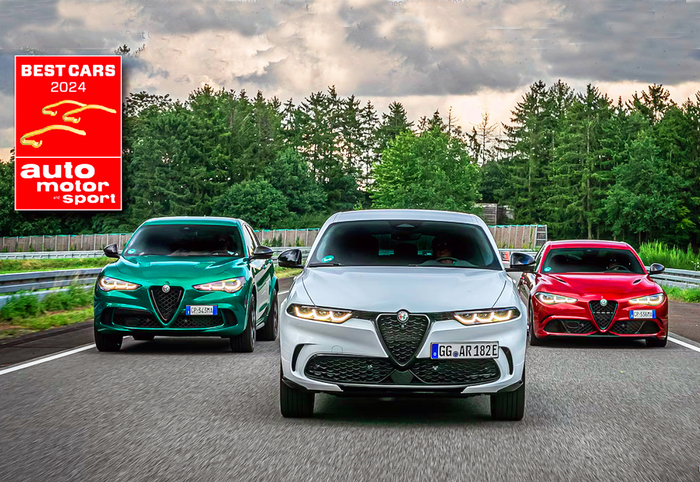Enlarge image
The fourth generation of the Skoda Fabia became longer, more spacious and technically more mature.
Only gasoline engines are available as drives
Photo: Skoda
The first impression
: Eleven centimeters longer, nine centimeters longer wheelbase - the new Skoda Fabia has almost arrived in the compact class.
The appearance of the car also looks fully developed.
What the manufacturer says:
Little Fabia is pretty important to the new Skoda boss Thomas Schäfer. Of the first three generations of the series, more than 4.5 million copies were sold in a good 20 years. In addition, the new model should prove that small cars have a future - even if VW CEO Herbert Diess sometimes doubts that. Schäfer also sees the need for combustion cars like the Fabia. With them, mobility remains affordable. In view of rising fuel prices, this is a daring thesis. But at least Skoda keeps the entry-level price of the Fabia constant, even though it is bigger and better equipped.
Schäfer also knows that there is currently no getting around the electric car, at least in Western Europe. Instead of putting more budget into the Fabia, he is investing in the accelerated development of three additional electric cars. "One of them is supposed to become an entry-level model for around 20,000 euros and thus continue the idea of the Fabia for Generation E."
For Fabia series manager Jiri Dytrych, more efficiency was at the top of his to-do list, even without spending money on plug-in or mild hybrid drives. "If you don't have the money for electrification, you have to play with physics," says Dytrych and reports on the careful fine-tuning in the wind tunnel. A blind behind the radiator grille, usually reserved for larger models, particularly aerodynamic rims and a largely covered underbody reduce the drag coefficient of the new Fabia to 0.28. This makes the car the most streamlined small car at the moment. Together with optimized engines, this makes the Fabia much more economical.
We noticed that:
Switching from the old to the new Fabia feels like an upgrade.
A taller person's knees no longer drag against the dashboard or the front seats.
In terms of storage space, Skoda has saddled up another 50 liters, and with 380 liters is now on par with the VW Golf.
Numerous shelves, luggage baskets in the trunk and a removable cup holder in the center console hold a lot of small items.
There is also a new ambience.
“Even affordable hard plastic doesn't have to look cheap,” says Dytrych, referring to the graining that makes the dashboard and fan nozzles appear more valuable.
The screens in the cockpit match this.
As in the VW Polo, digital displays can now also flicker behind the steering wheel if desired.
The Fabia makes a grown-up impression when driving.
The longer wheelbase guarantees more calm in the structure, the set-up is superior, the car steers solidly.
It's going well with serenity.
Those who like it tight and sporty are probably better off with Seat or the Ford Fiesta.
The drive to cut costs is noticeable.
Above all, the five-speed gearbox for the weaker, somewhat potty three-cylinder engines look antiquated.
A starter generator would significantly increase comfort.
Without this booster, the Fabia falls into turbo lag when accelerating.
And the automatic start-stop system shakes the car so badly at every traffic light that it is better to turn it off.
You have to know that:
With the fourth generation, the Fabia is switching to the MQB-A0 group platform, on which the VW Polo and Seat Ibiza are also based. This is how new technology comes into the small car. In addition to infotainment, these are primarily assistance systems through to automatic distance control and automatic parking. In addition, there will be up to nine airbags on board in the future.
Little has changed with the engines.
Skoda takes over the units from the predecessor, but changes the combustion process.
The naturally aspirated engines now run in the more economical Atkinson cycle, the turbo units in the Miller cycle.
The one-liter engine is available with 66, 80, 95 or 110 hp, so that top speeds of up to 205 km / h are possible.
In addition, there will soon be a 1.5 liter four-cylinder engine with 150 hp and a top speed of 225 km / h.
Diesel engines, on the other hand, were removed from the range.
For the market launch on September 18, the cheapest model will cost 16,290 euros.
The basic model is to follow by the end of the year at a price of just under 14,000 euros.
The preliminary top model costs 23,390 euros, the 150 PS version that will follow later should be close to 30,000 euros.
We won't forget that:
The shrunk tank, discovered when looking at the data sheet.
While the Fabia has otherwise grown, it holds five liters less gasoline.
It is remarkable that he still gets further with a filling.
Thomas Geiger is a freelance author and Skoda supported his research. Reporting is independent of this.













